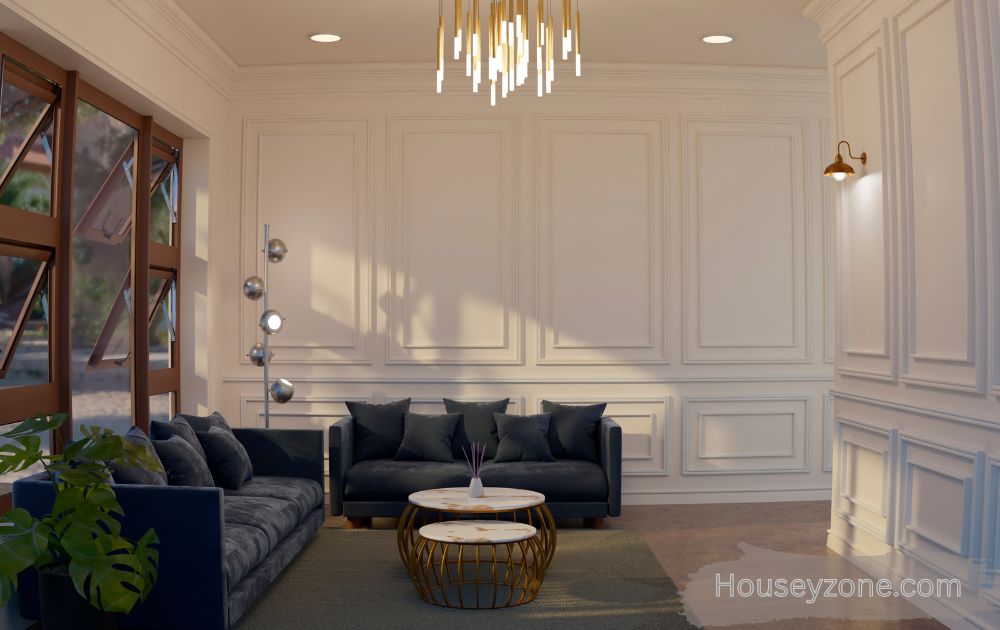Choosing the right paint color can completely transform your home. One shade that has earned a timeless reputation is alabaster paint. Loved by designers, homeowners, and decorators alike, alabaster offers a balance between warmth and brightness that makes it versatile for almost any space.
What is Alabaster Paint?
Definition and Origin of the Color
Alabaster is a soft, creamy white shade that leans warm without being yellow. Inspired by the natural mineral alabaster, this color radiates purity and calm.
Why It’s Popular in Modern Interiors
Unlike stark whites that can feel sterile, alabaster brings a cozy yet fresh vibe. It bridges the gap between crisp modern minimalism and inviting comfort, which is why it remains a top choice among trending interior palettes.
The Psychology Behind Alabaster Paint
Colors affect emotions, and alabaster is no exception.
- Calm and Serene Ambiance: Its warm undertone creates a soothing environment, perfect for relaxation.
- Versatility in Moods and Settings: Alabaster adapts beautifully, whether you want a cozy family home or a polished office space.
Alabaster Paint vs. Other Whites
Not all whites are created equal. Let’s see how alabaster compares.
- Alabaster vs. Pure White: Pure White has cooler undertones, making it sharper, while alabaster feels softer.
- Alabaster vs. Snowbound: Snowbound leans slightly gray, while alabaster stays warmer.
- Alabaster vs. Swiss Coffee: Swiss Coffee has a creamier, almost beige undertone, whereas alabaster is a true warm white.
Where to Use Alabaster Paint
Living Rooms
It brightens up living areas without making them feel cold.
Bedrooms
Its warm tone makes bedrooms cozy, especially when paired with soft linens.
Kitchens
Alabaster cabinets and walls reflect light beautifully, making kitchens feel airy.
Bathrooms
It gives a clean, spa-like vibe without looking too clinical.
Hallways and Entryways
Alabaster works wonders in narrow spaces, making them feel open and inviting.
Alabaster Paint in Different Lighting Conditions
- Natural Daylight: Appears bright and soft.
- Warm Artificial Light: Enhances its cozy undertone.
- Cool Artificial Light: Makes it look slightly crisper, closer to pure white.
Complementary Colors for Alabaster Paint
Neutral Pairings
Greige, taupe, and soft beige enhance alabaster’s warmth.
Bold Accents
Navy, charcoal, and deep green create contrast and depth.
Soft Pastels
Blush pink, pale blue, or lavender bring a delicate touch.
Alabaster Paint in Interior Styles
- Modern Minimalism: Clean lines with alabaster as the backdrop.
- Farmhouse Chic: Pairs perfectly with rustic wood and metal.
- Coastal Vibes: Works beautifully with blues, sandy tones, and natural textures.
- Classic Traditional: Alabaster highlights crown moldings and antique furniture.
Best Trim and Ceiling Colors with Alabaster Walls
Using alabaster on walls with Pure White trim creates subtle contrast, while alabaster on both walls and trim offers a seamless, monochromatic look.
Exterior Use of Alabaster Paint
Alabaster isn’t just for interiors.
- Curb Appeal: Alabaster-painted exteriors look timeless and welcoming.
- Pairing with Darker Accents: Black shutters or a navy front door can create a striking effect.
Pros of Choosing Alabaster Paint
- Classic and timeless.
- Works in any room or style.
- Reflects light beautifully.
Cons of Using Alabaster Paint
- Can appear flat in poorly lit spaces.
- Requires regular cleaning to maintain brightness.
Practical Tips for Decorating with Alabaster Paint
- Test samples in different rooms before committing.
- Pair with warm woods for a cozy feel.
- Use contrasting décor to prevent a washed-out look.
Expert Opinions on Alabaster Paint
Designers consistently recommend alabaster for its adaptability. Whether staging a home for sale or creating a long-term living space, this shade remains a reliable choice.
FAQs About Alabaster Paint
Is alabaster paint too yellow?
No, alabaster leans warm but avoids yellow undertones, keeping it soft and neutral.
Does alabaster paint look good with gray?
Yes, light and medium grays pair beautifully, adding contrast without clashing.
Is alabaster paint good for small rooms?
Absolutely! Its reflective quality makes small spaces feel larger and more open.
Can alabaster paint be used on cabinets?
Yes, it’s an excellent choice for cabinets, offering a fresh yet warm appearance.
What finish works best with alabaster paint?
Matte for walls, satin for trims, and semi-gloss for cabinets or doors.
Conclusion
Alabaster paint is more than just a color it’s a design essential. Its ability to adapt to different lighting, pair with various styles, and create a calm, timeless ambiance makes it a favorite for homeowners and designers alike. If you’re searching for a versatile shade that balances warmth and freshness, alabaster paint deserves a spot on your walls.


